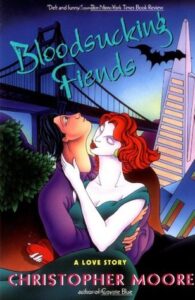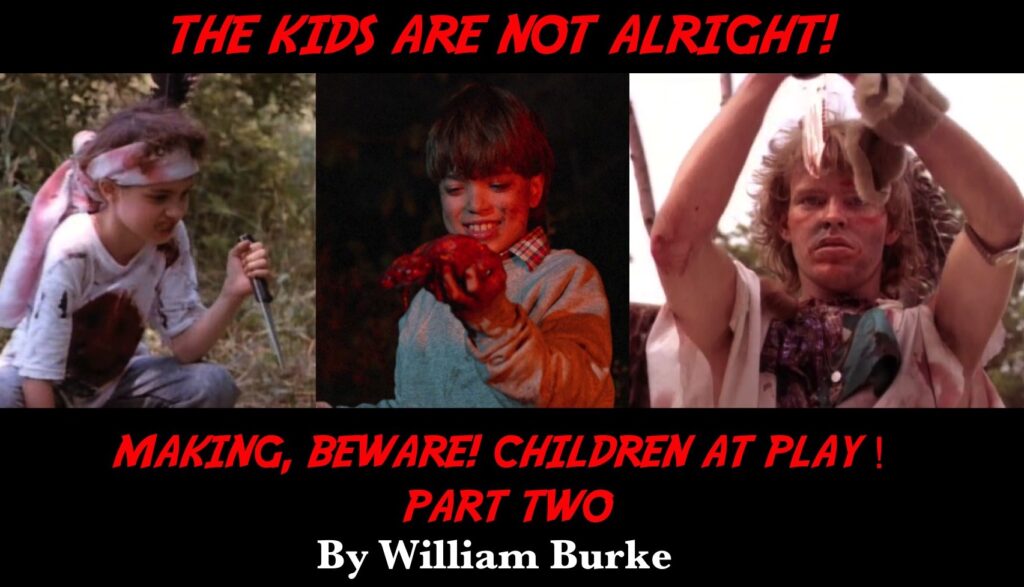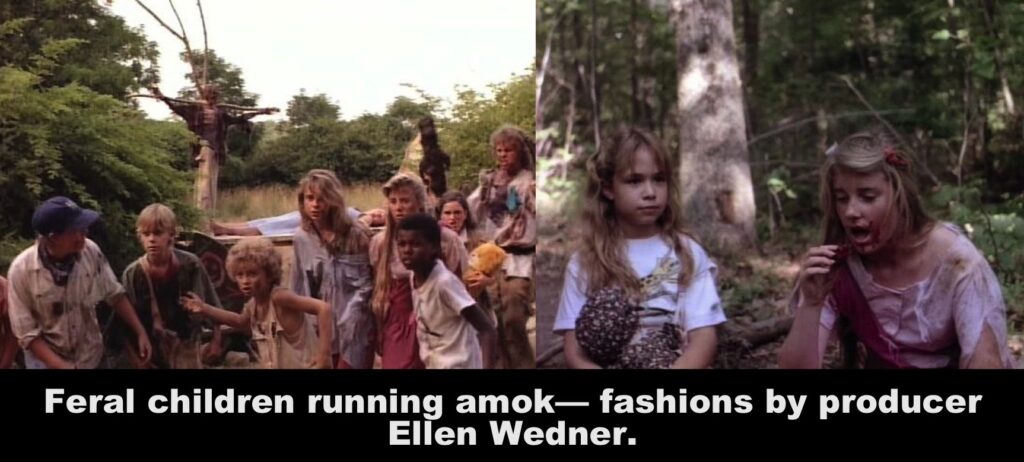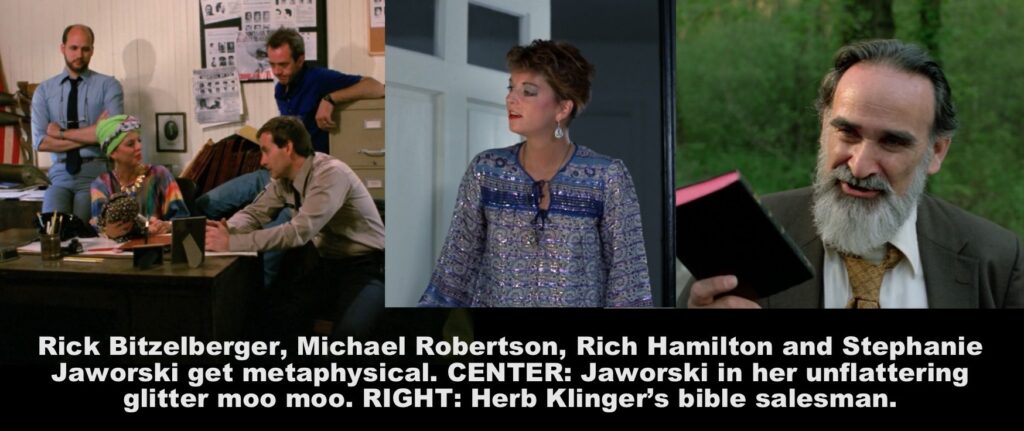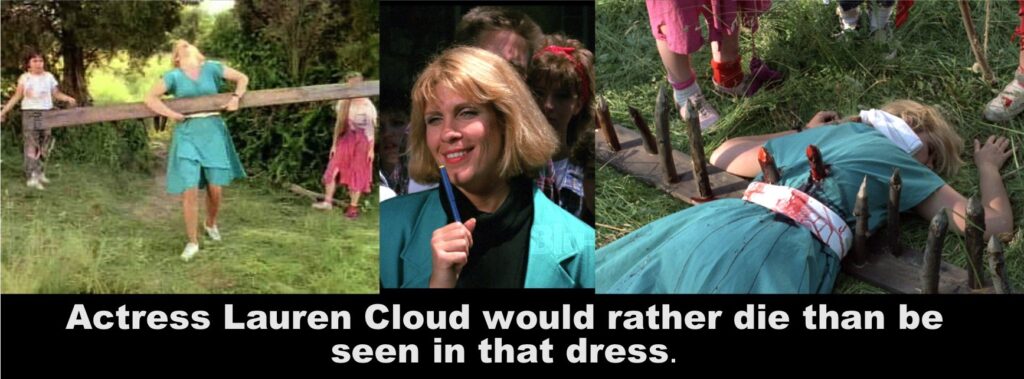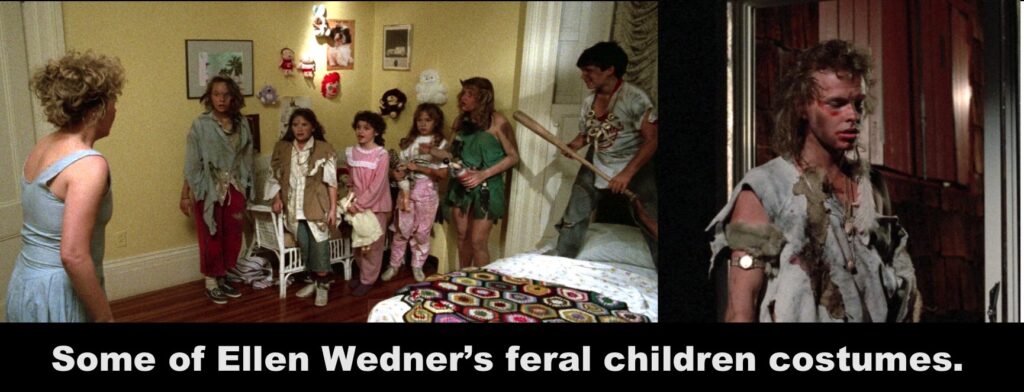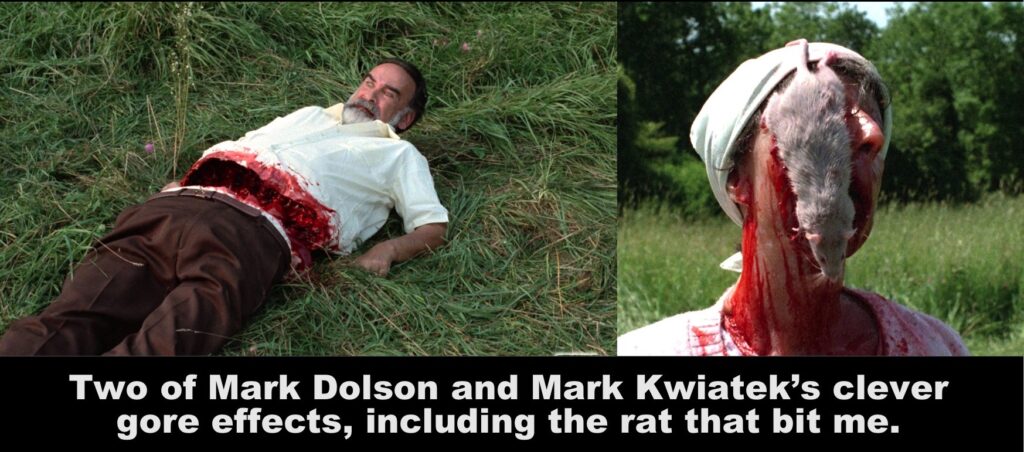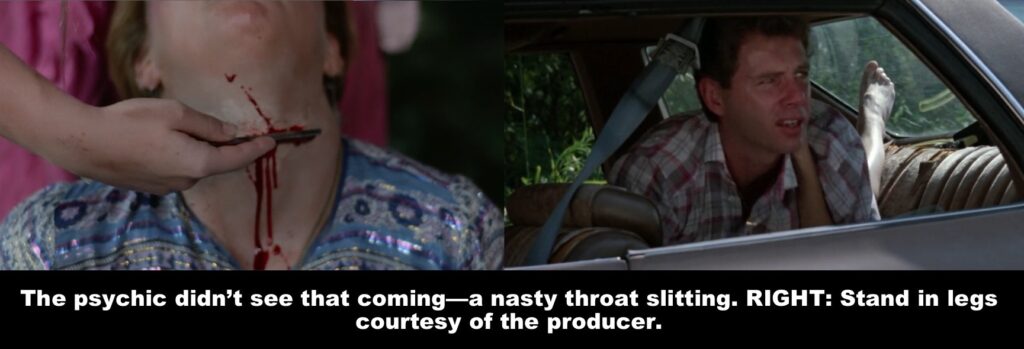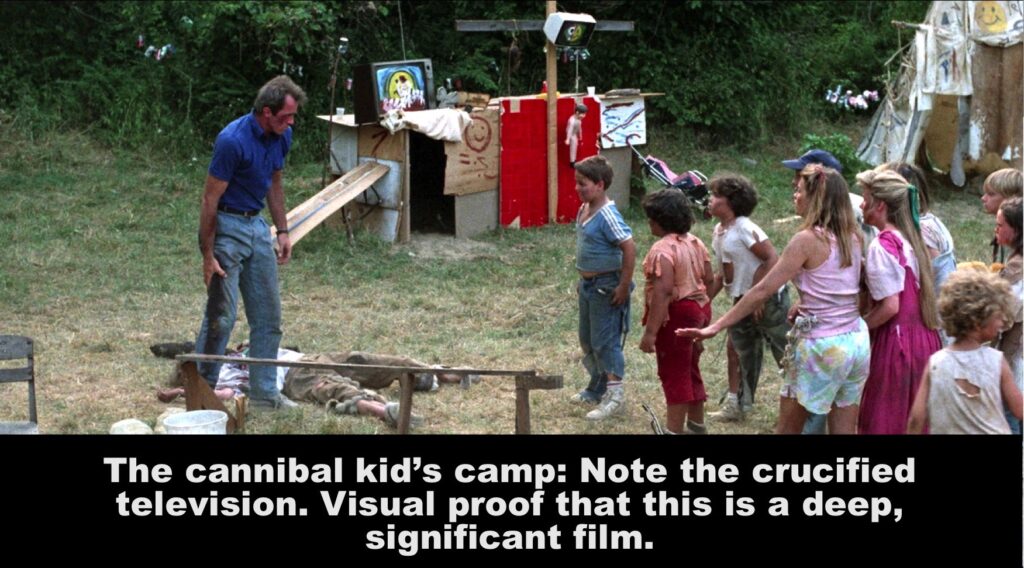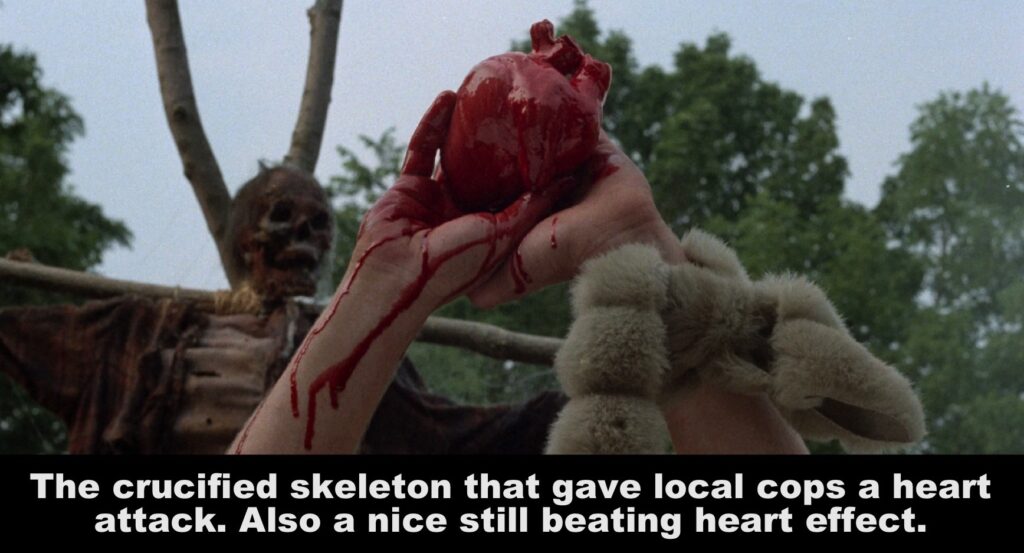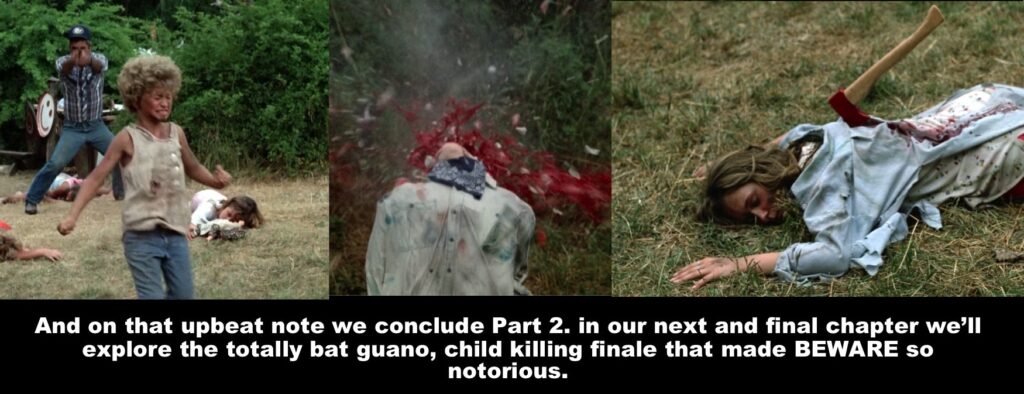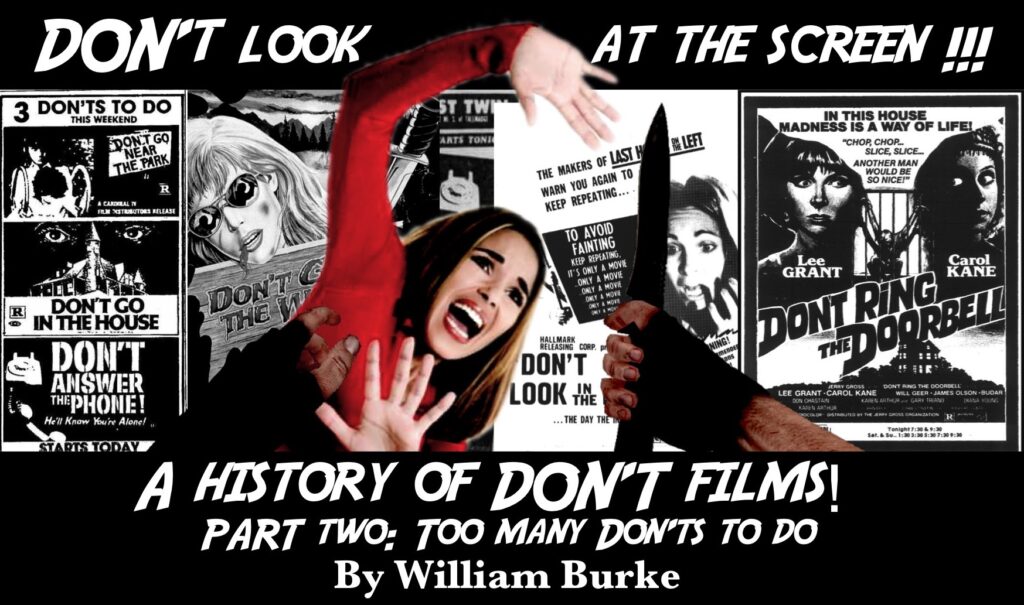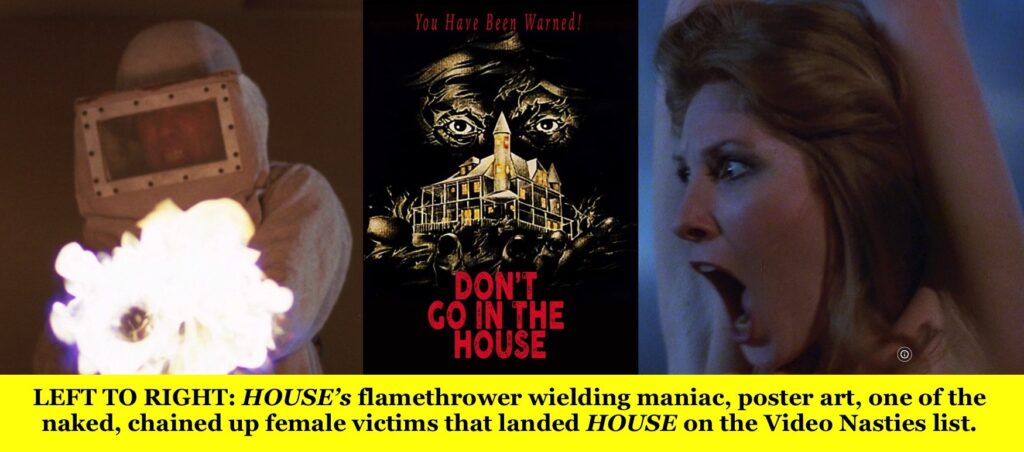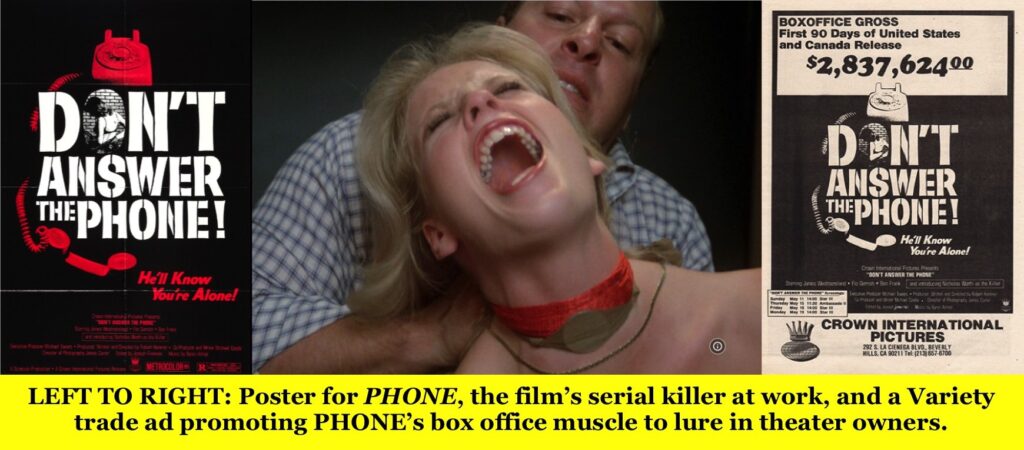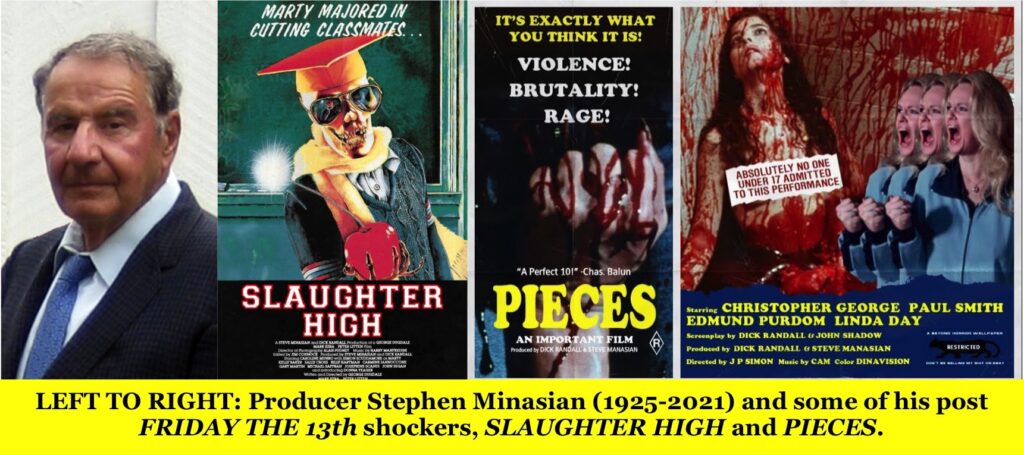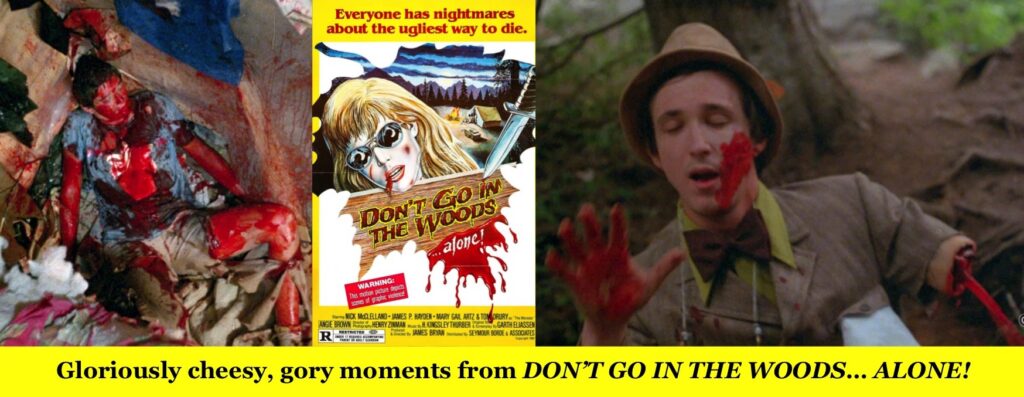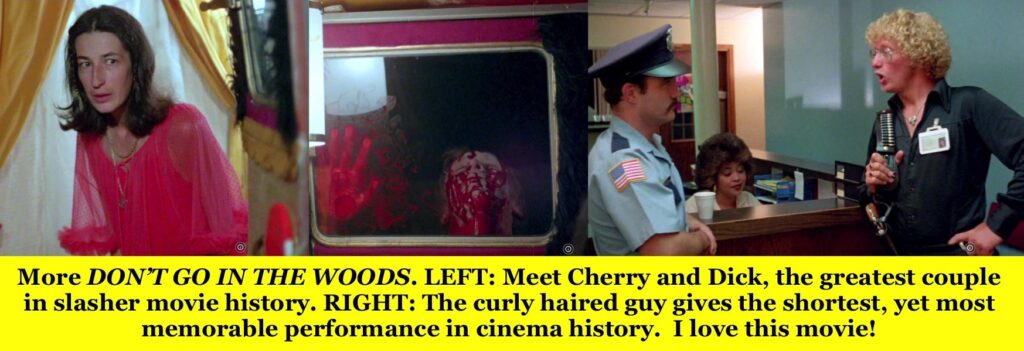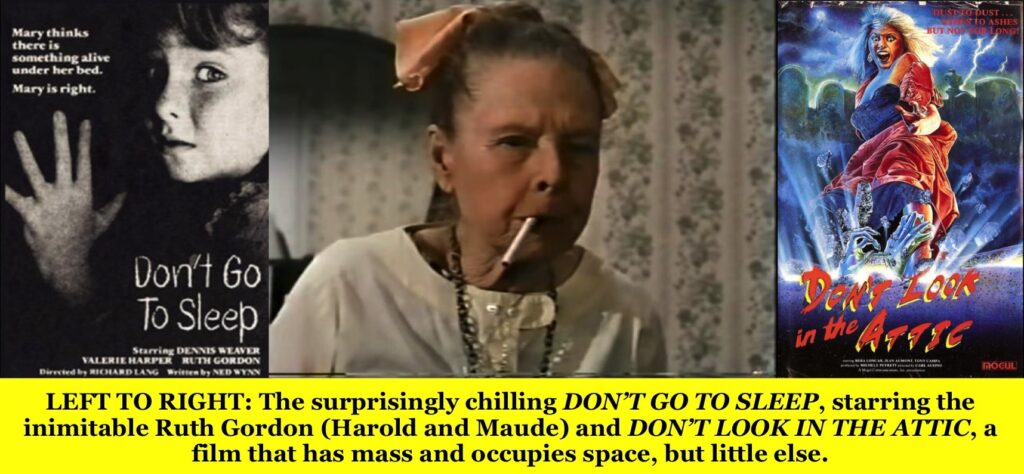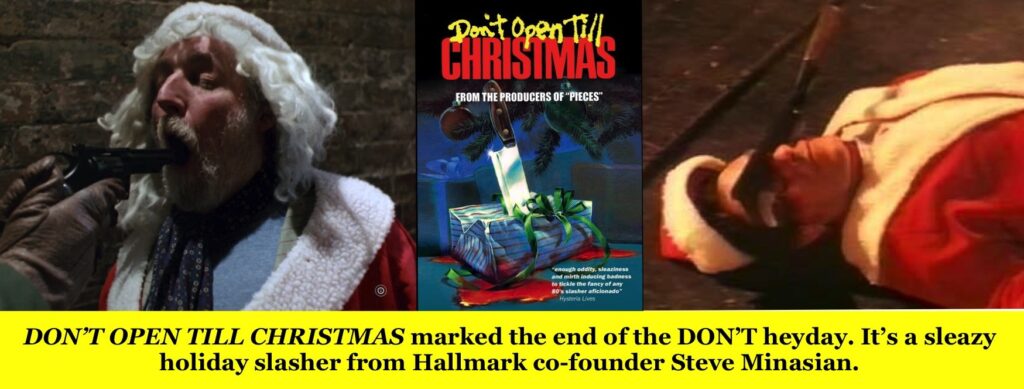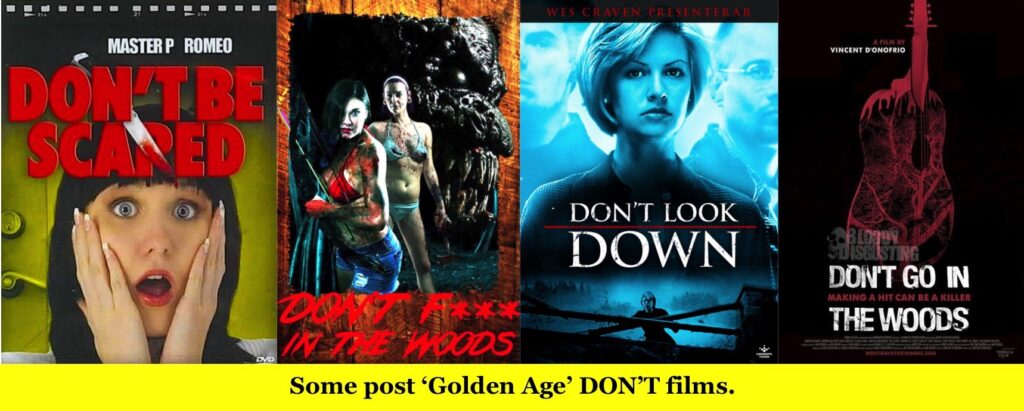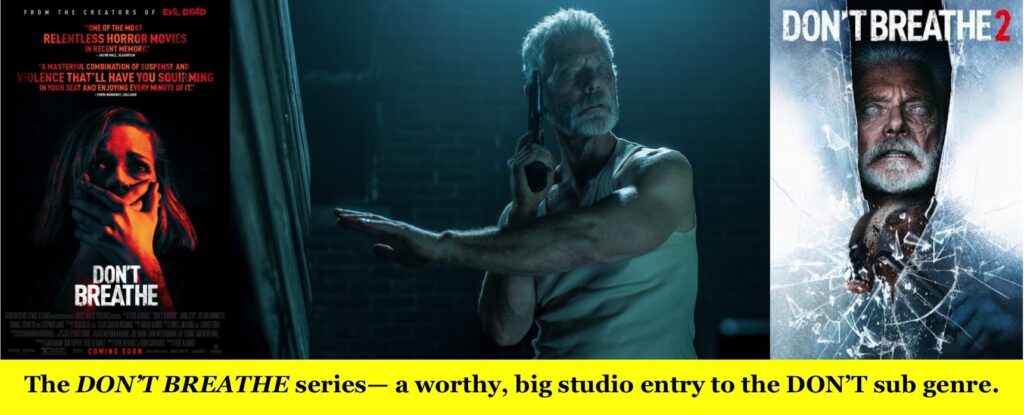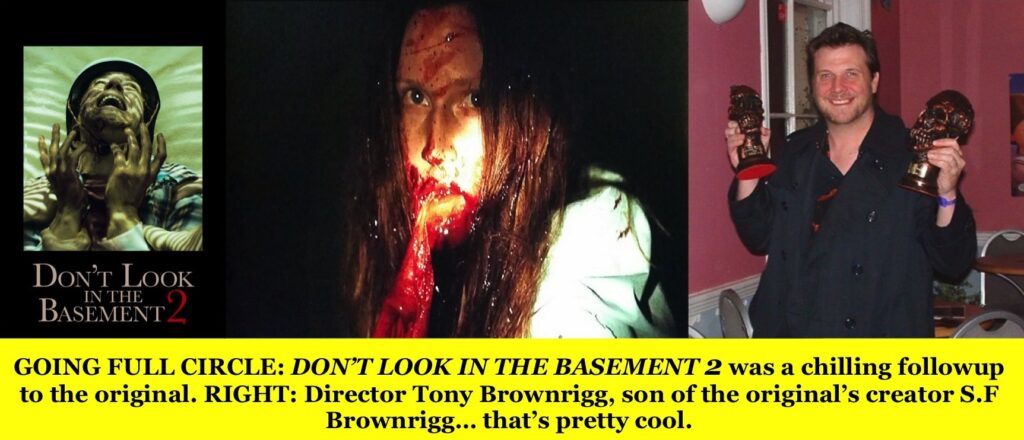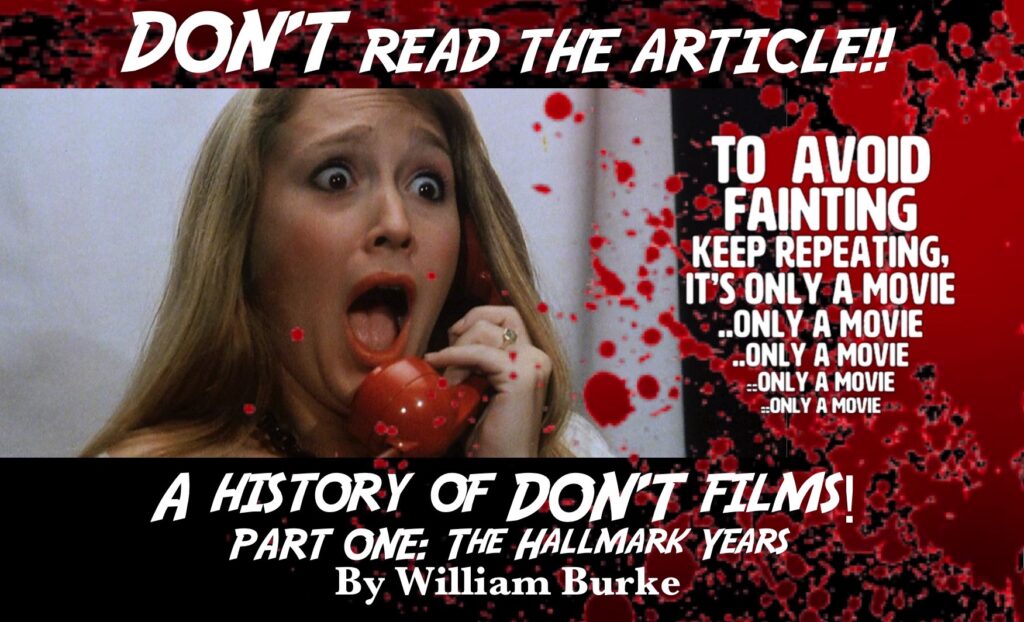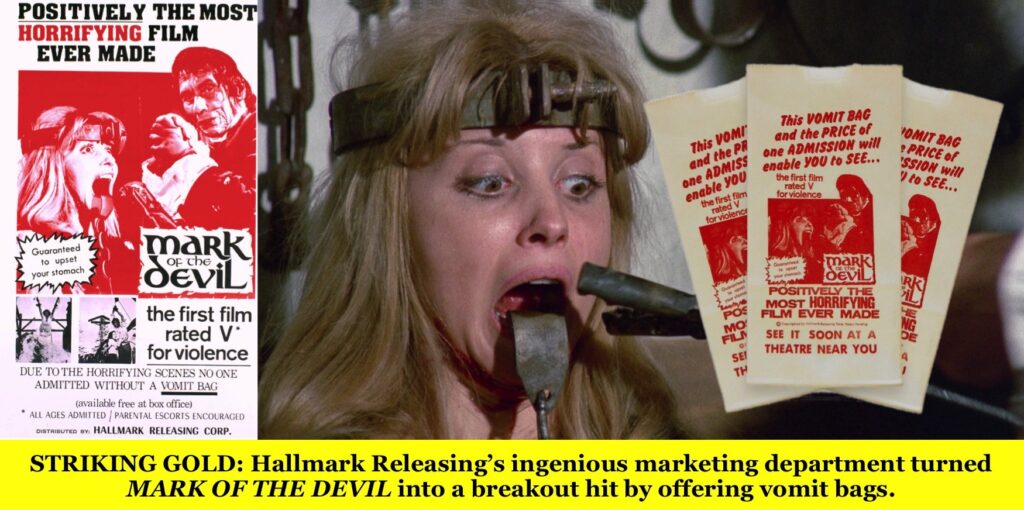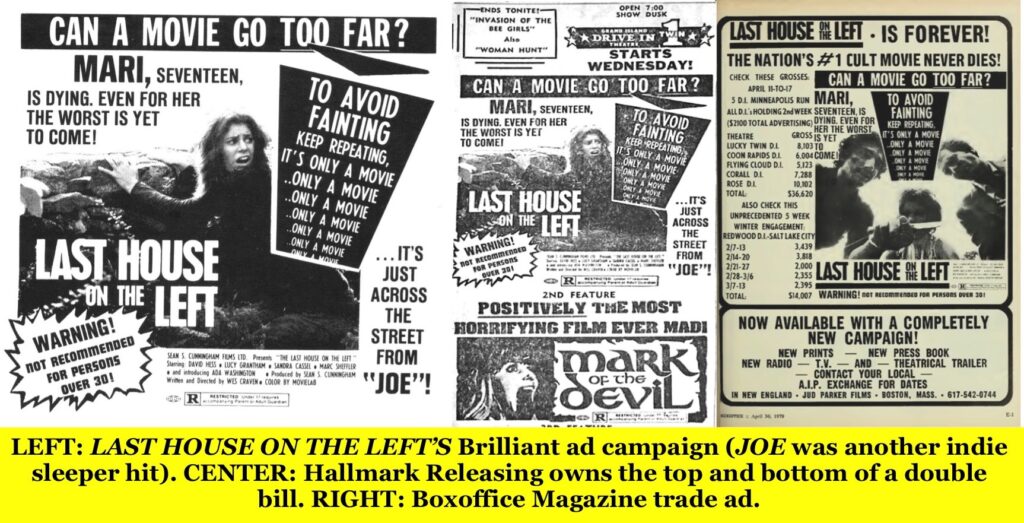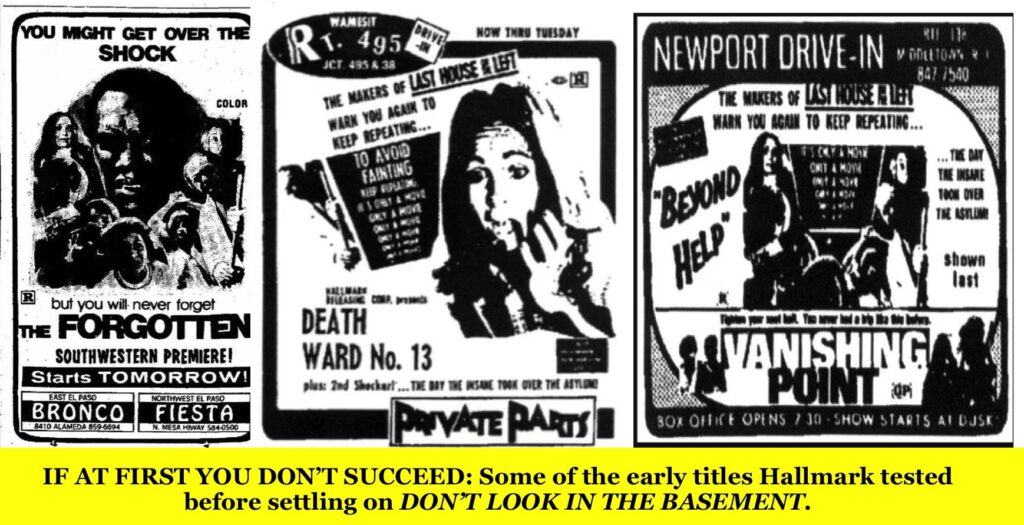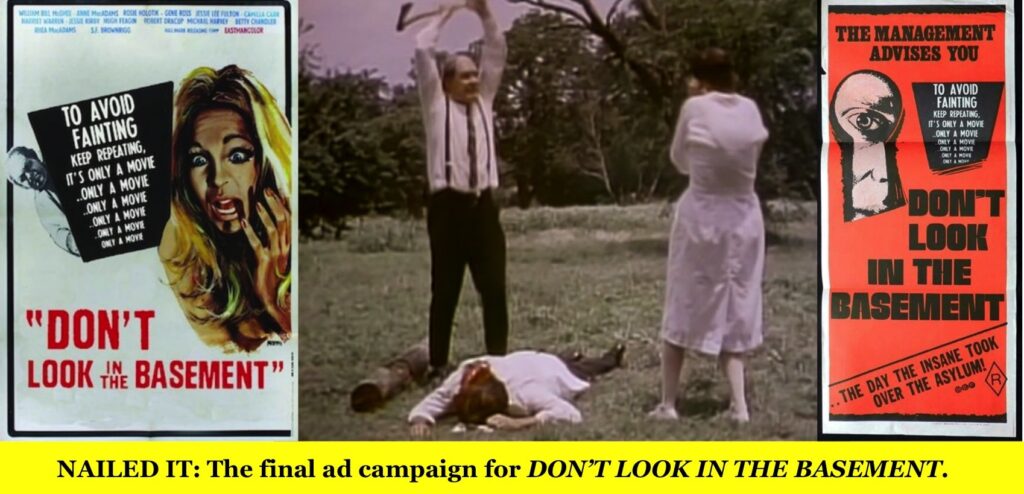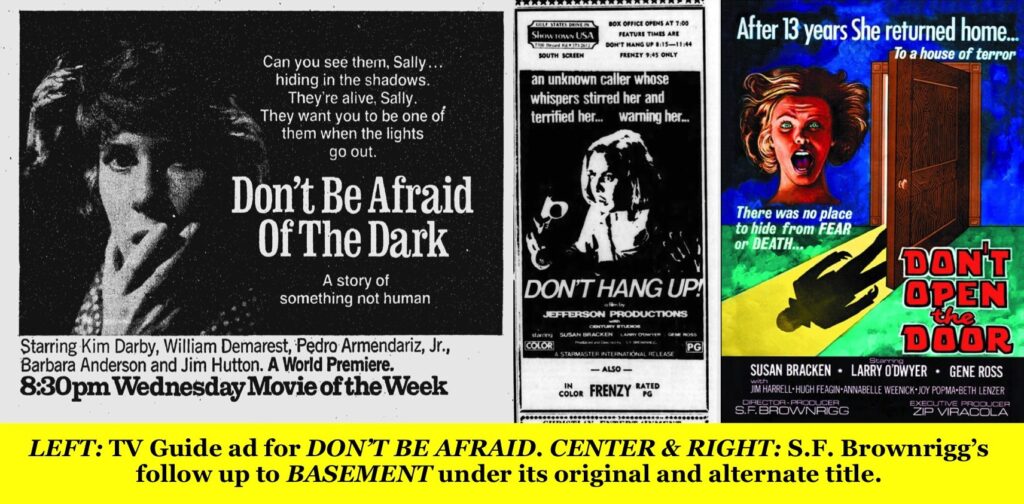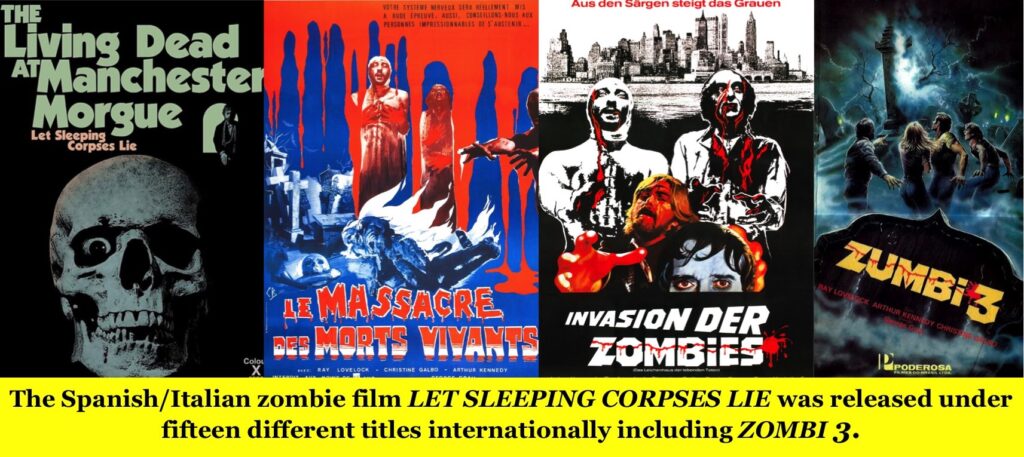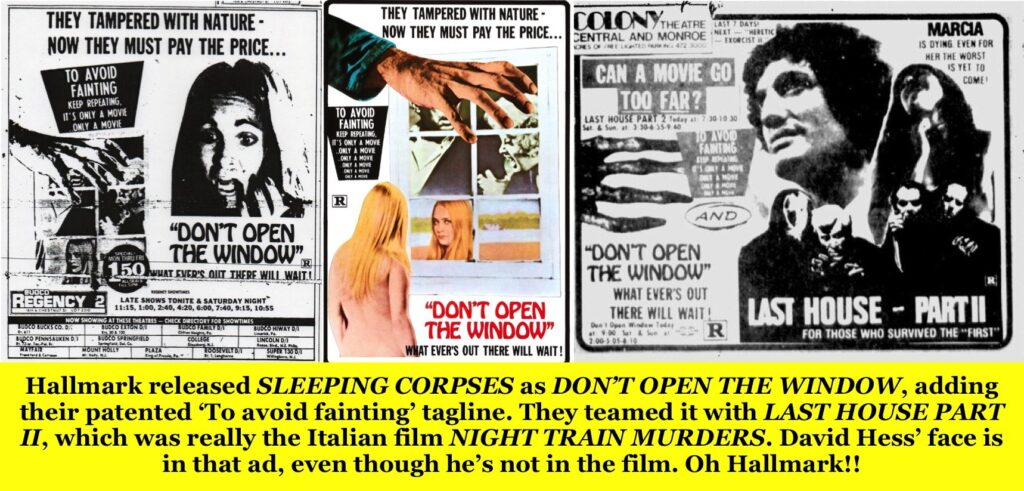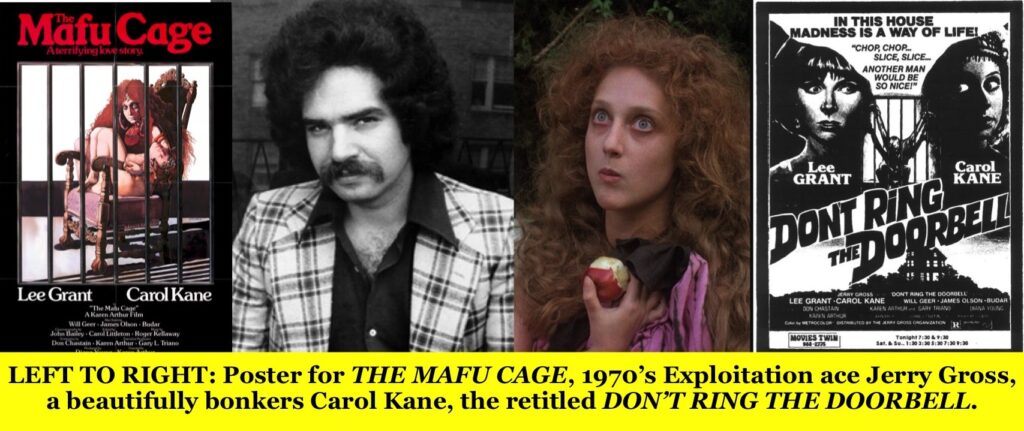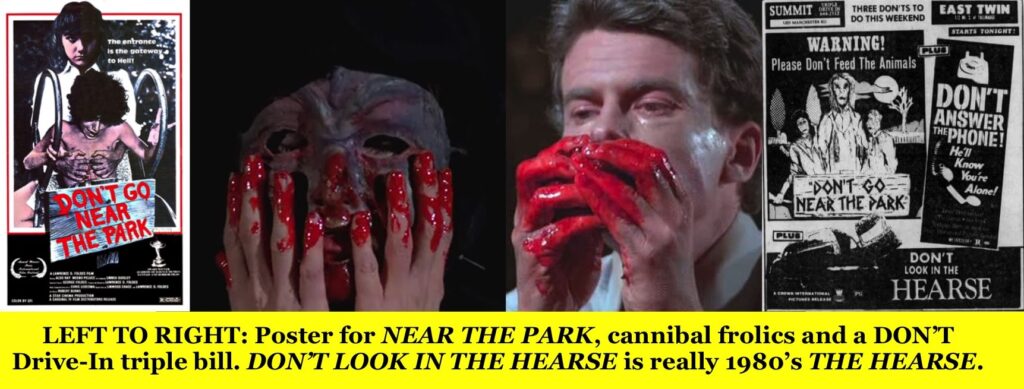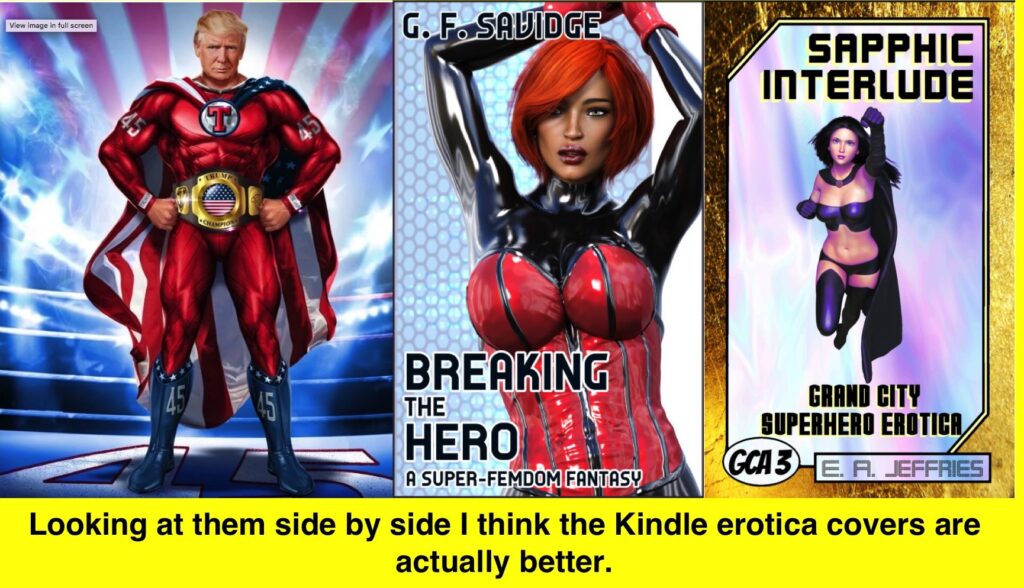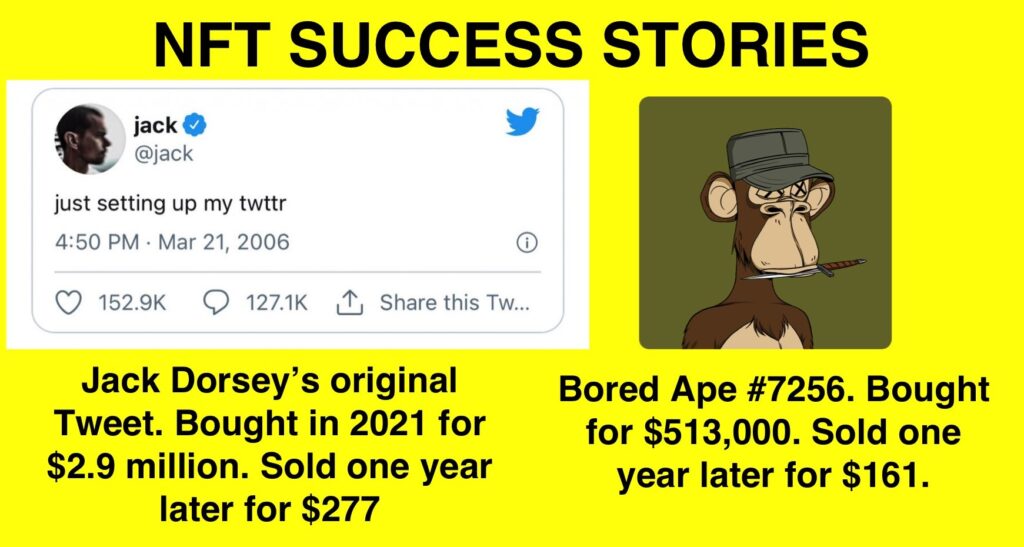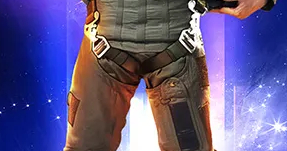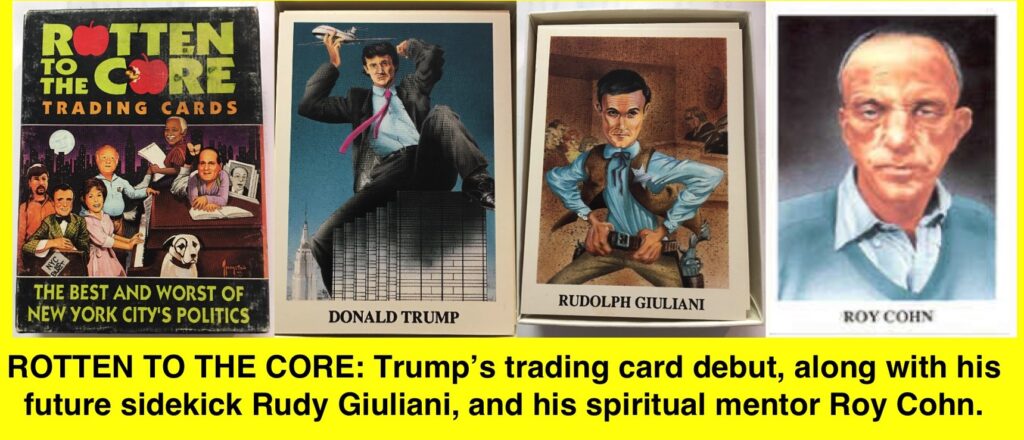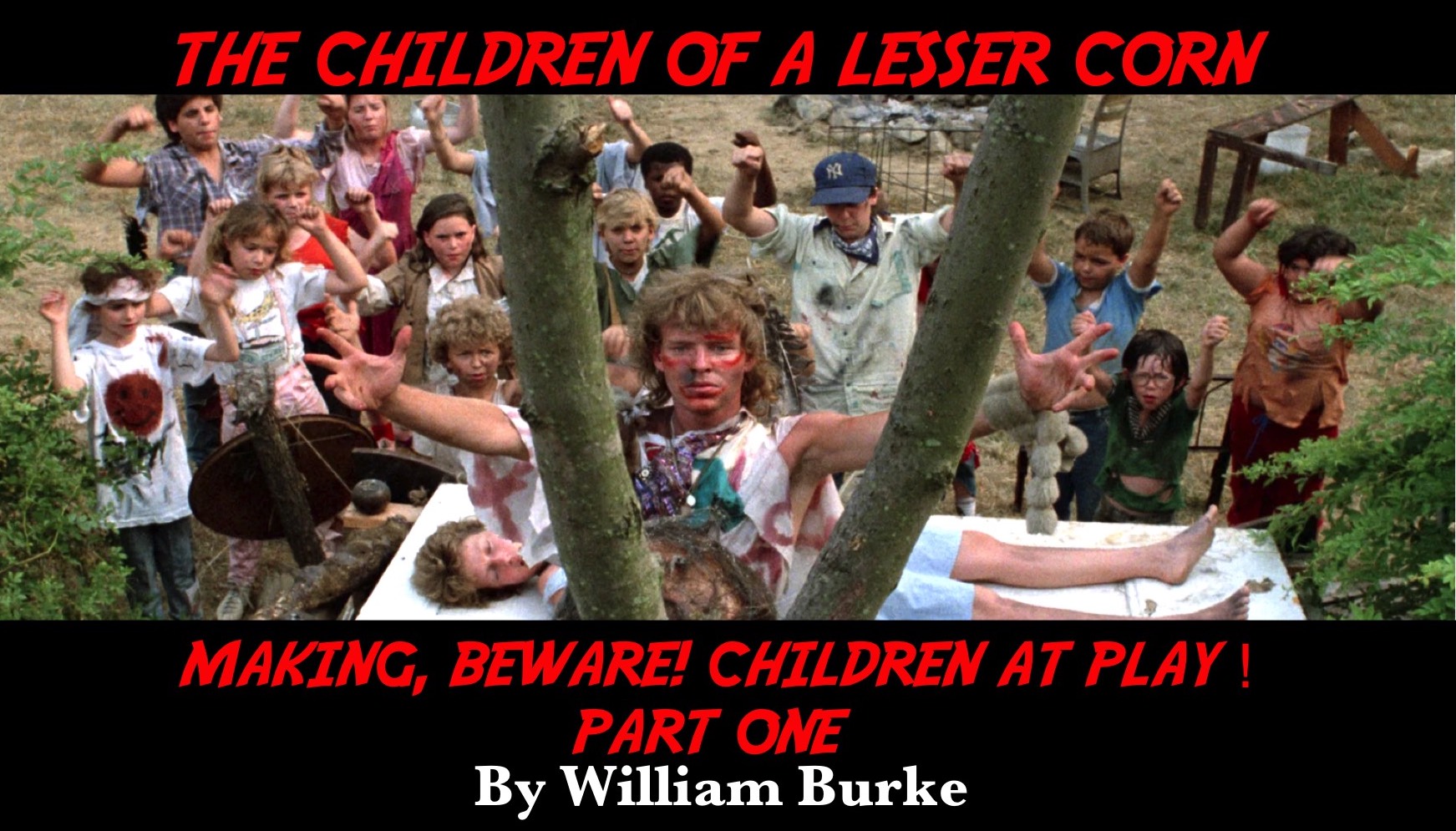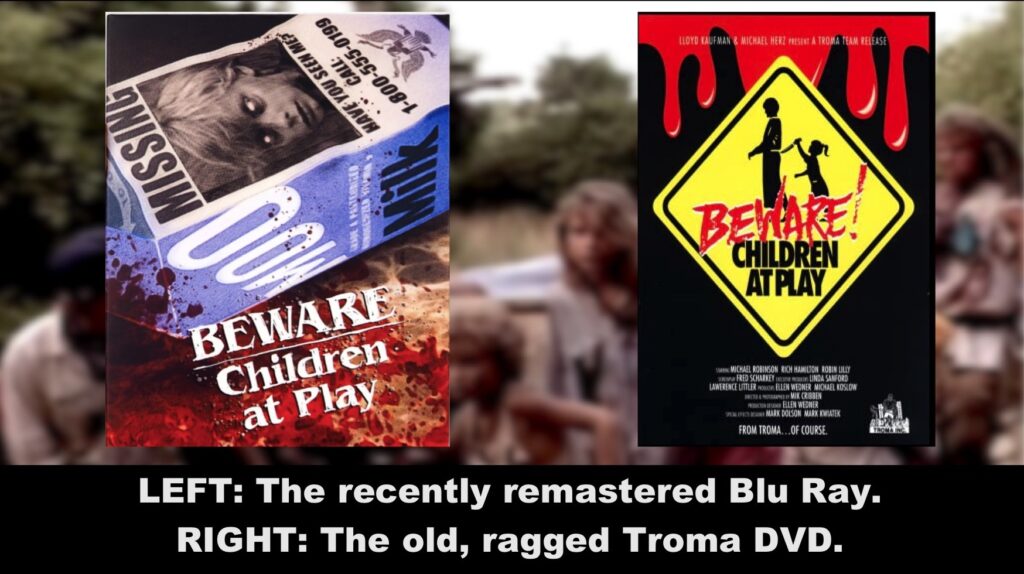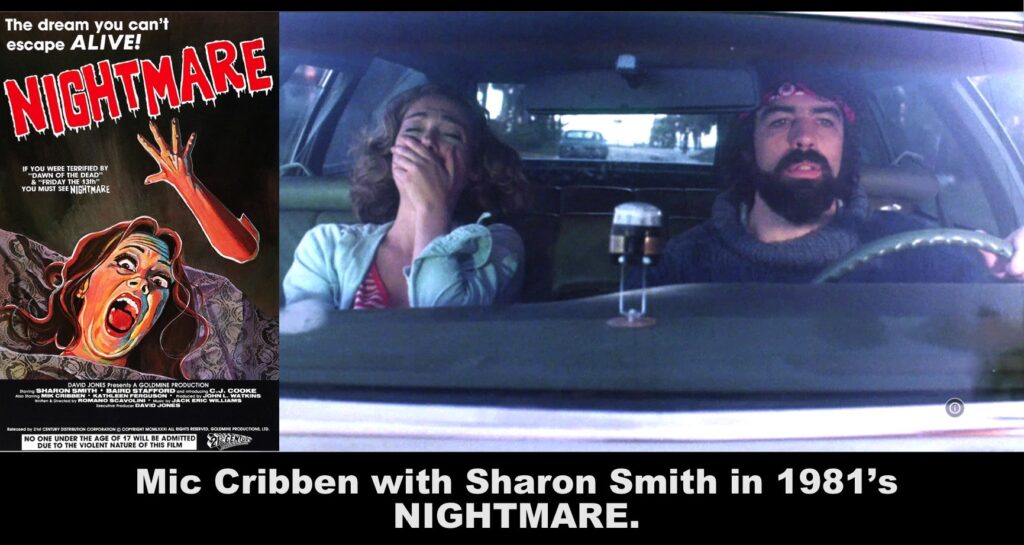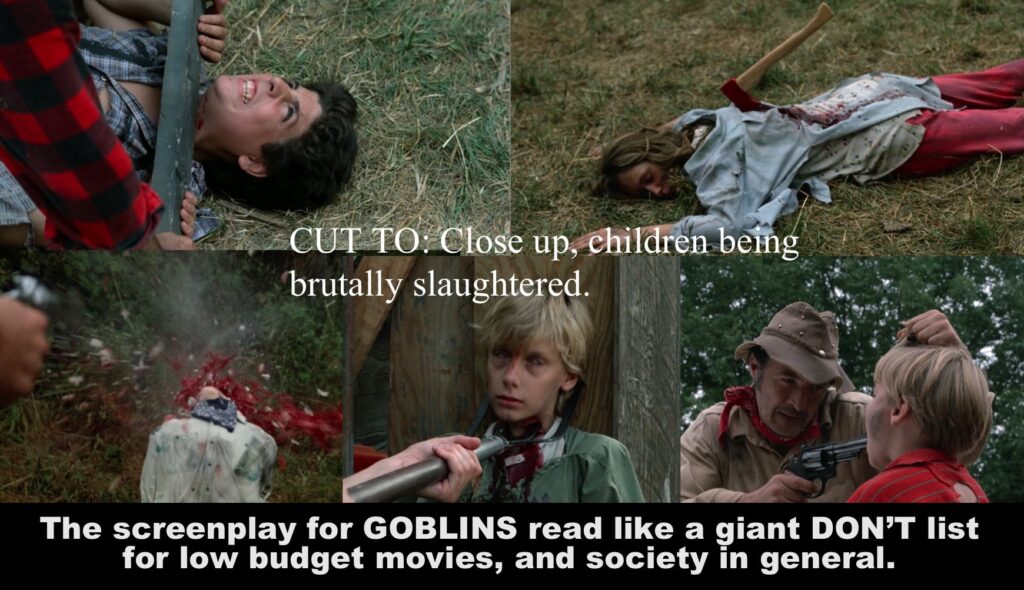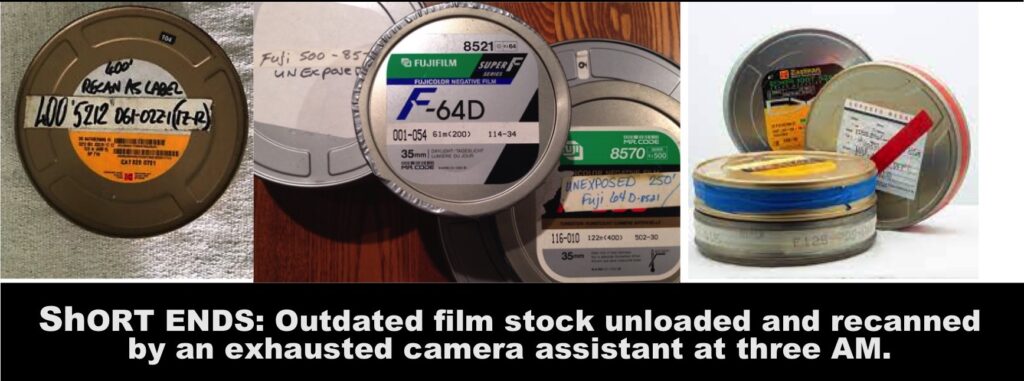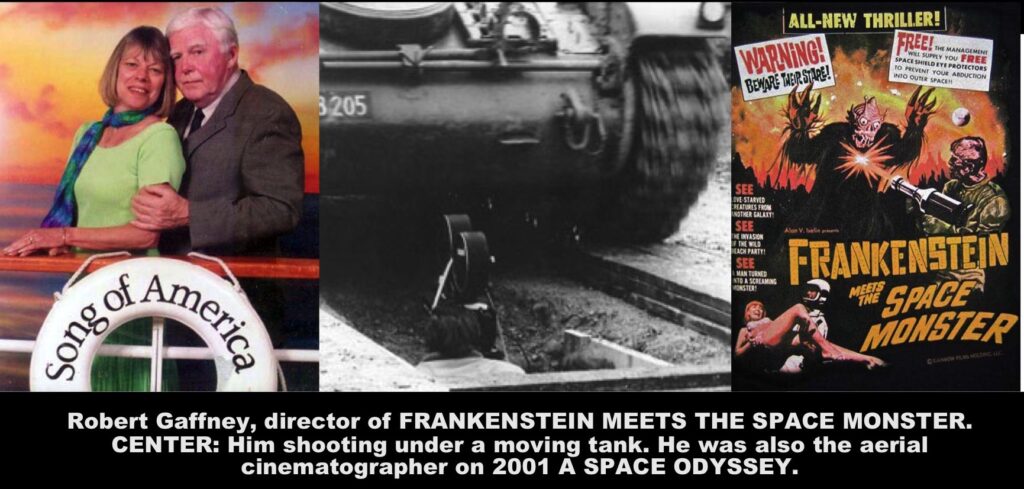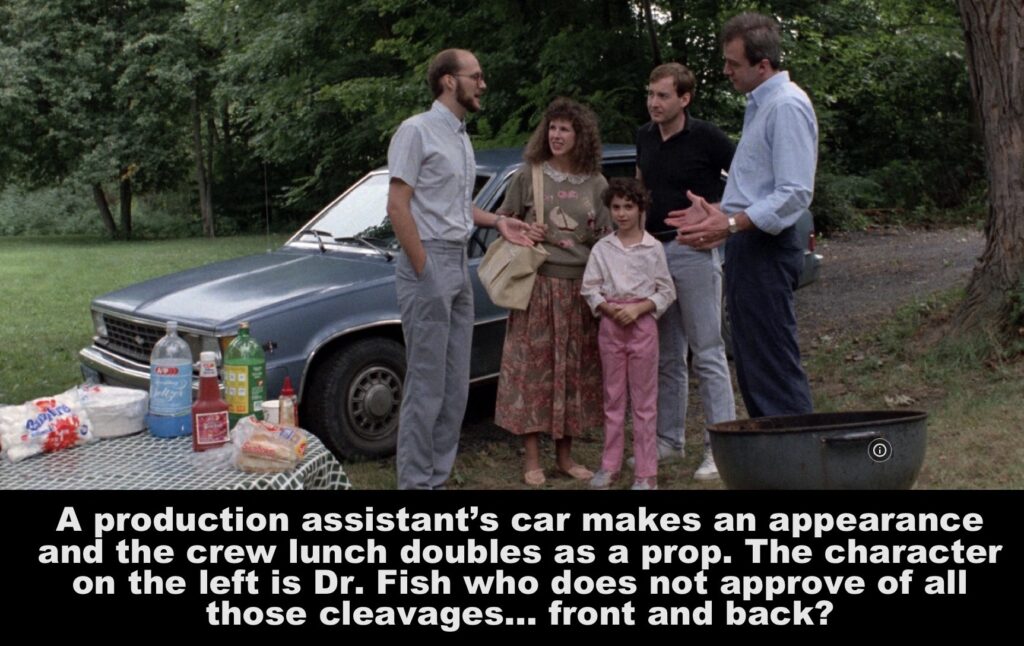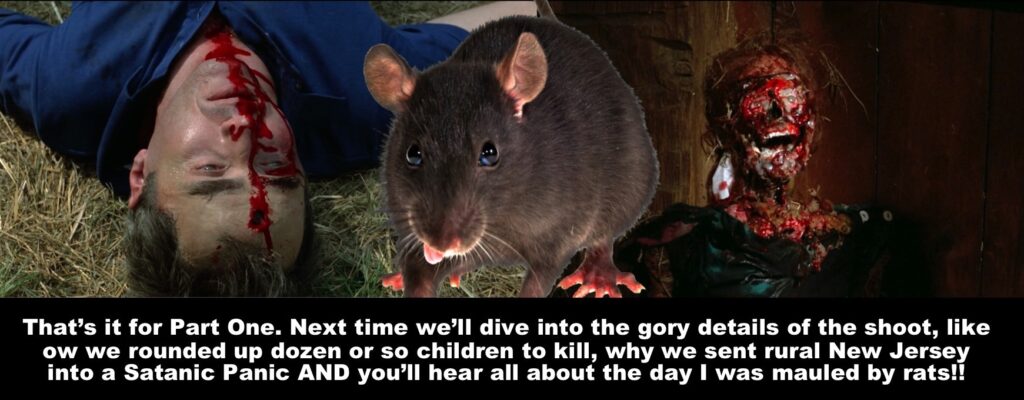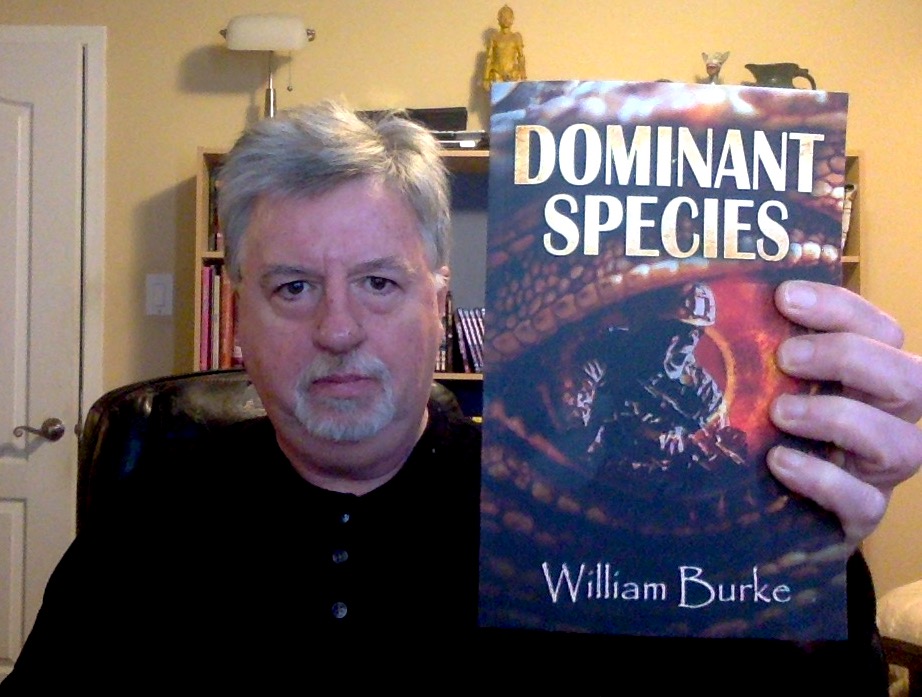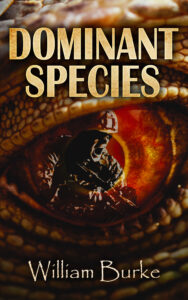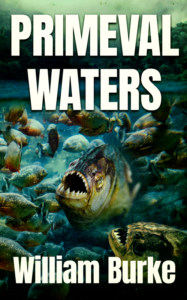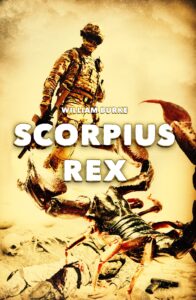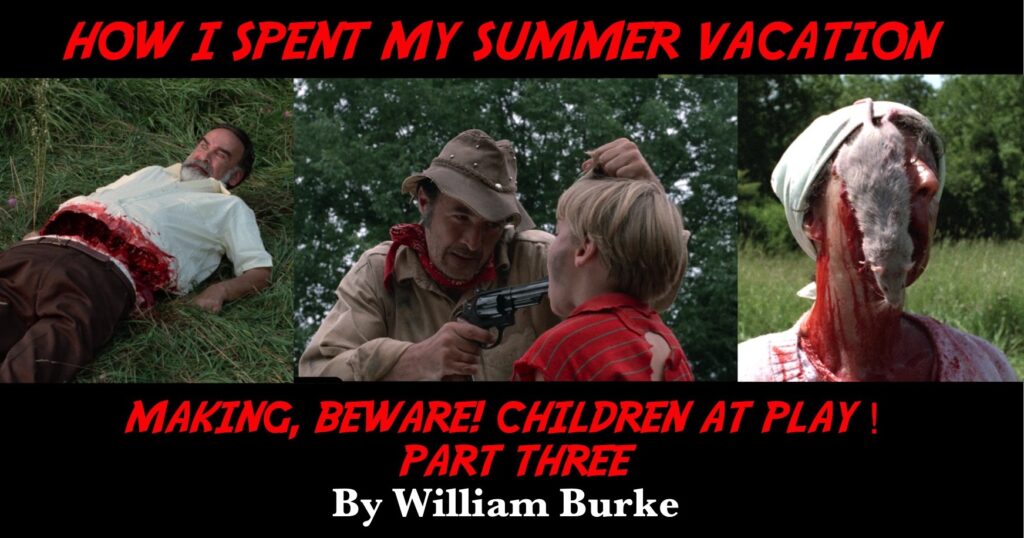
Welcome back to the final chapter of Beware Children at Play. And, being our final chapter, we’ll cut straight to the film’s finale—the notorious, ‘kill all the children scene.’
On paper the idea of a dozen children being shot, stabbed and bludgeoned by their own parents sounds truly reprehensible. But due to budgetary restraints, and inexperienced child actors the scene manages to be both campy and revolting at the same time. Plus, there’s a weird, carnivalesque synth beat playing under the kids’ hammy death throes, making it hard to take seriously. I have to take some credit, or blame, for two of the finale’s more outré moments.
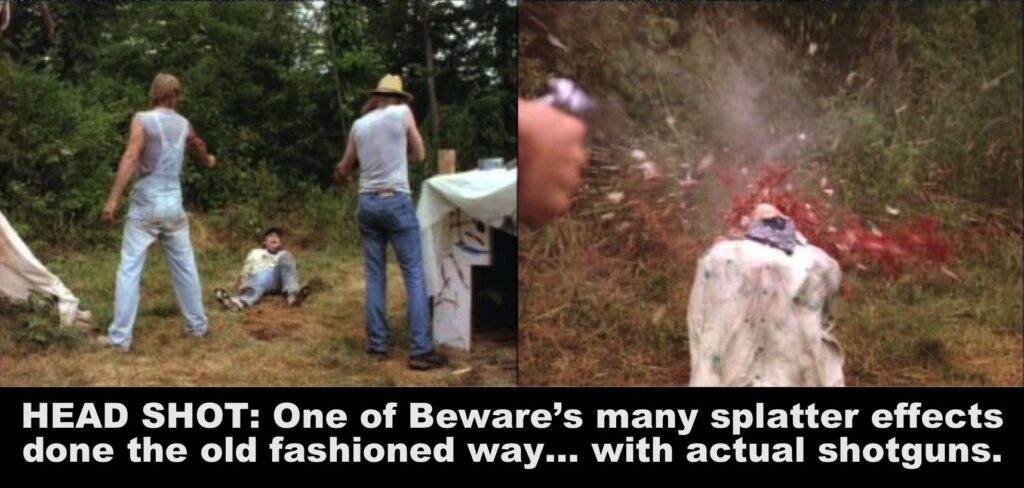
For whatever misguided reason Mic was allowing me to offer some creative input. Like every true grindhouse movie buff, I’d seen William Lustig’s Maniac, and remembered its gruesome decapitation by shotgun blast. I encouraged Mic to try and duplicate that scene. Luckily one of the kids in our cast was an aspiring special effects makeup artist, who let Mark do a life casting of him to create a fake head. We also gave the character a baseball cap to help sell the phony noggin. The hollow head was stuffed with meat and blood bags, then attached to the dummy. When the cameras rolled, we fired two shotguns into it simultaneously.
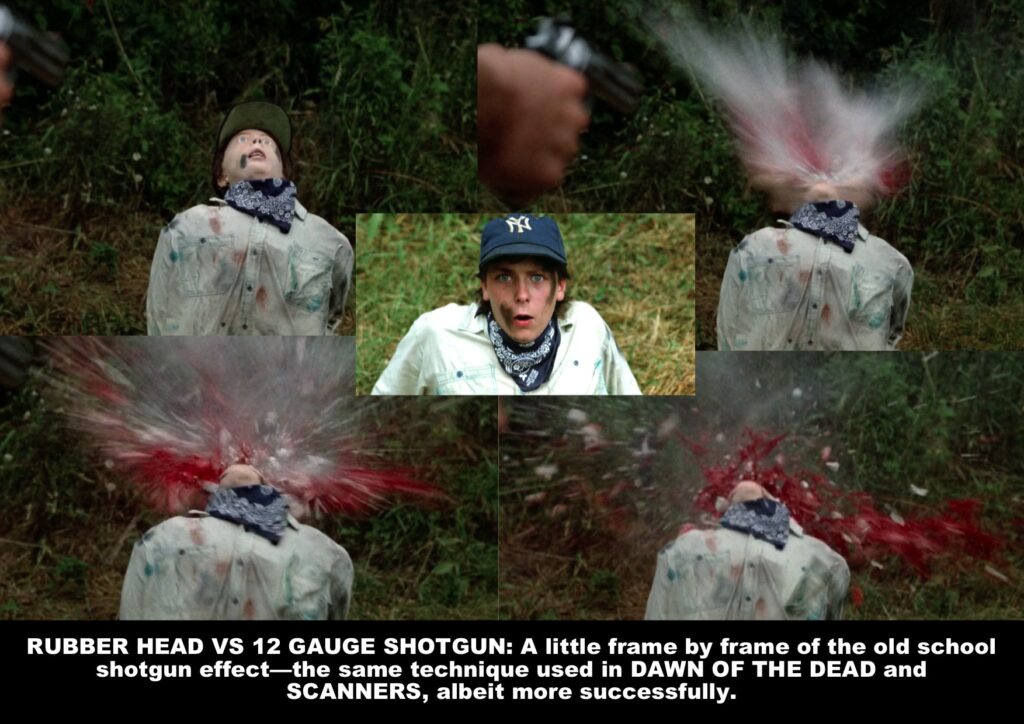
The effect only sort of worked. The problem stemmed from the shotguns being loaded with birdshot, as opposed to buckshot, so there wasn’t enough force to remove the head. I still give it a B+ for effort.
My second contribution has actually become an online meme. It’s when the little boy has a pistol stuffed in his mouth and gets his brains blown out. We couldn’t use squibs around children, so an air pressure thing-a-ma-bob was mounted to the wall behind the lucky tyke’s head. When the actor pulled the trigger the air ram sprayed blood and brains all over the wall.
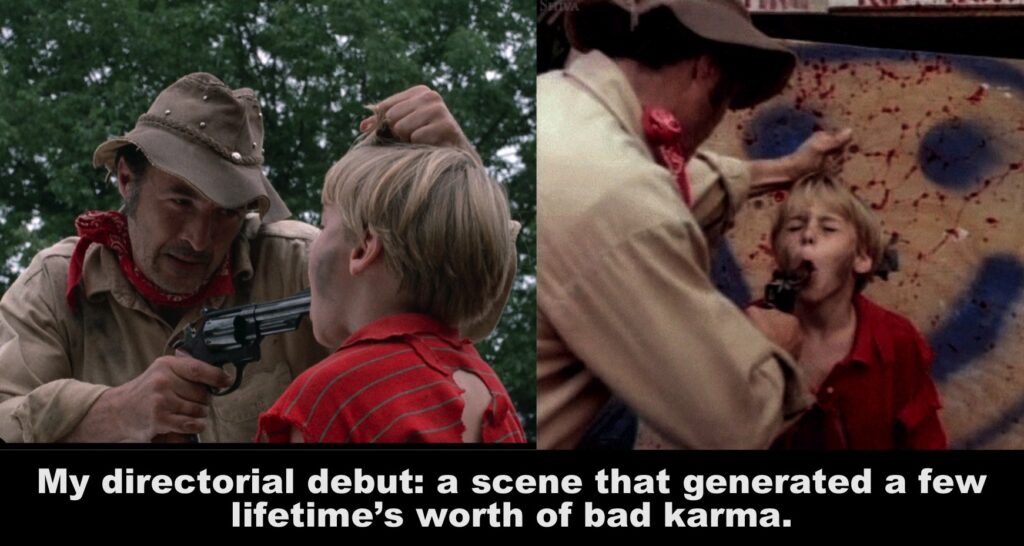
Mic actually let me direct that scene… though I couldn’t put it on my directing reel without being arrested. It stands out from the rest of the murders, though not in a good way. While there’s a goofy tone to the other killings, the pistol in the mouth bit is just plain grim. That scene is why I’m still not invited into nice homes.
Speaking of guns… If you’re wondering how a movie with no budget managed to get so many stage weapons on set… well, we didn’t. The townspeople just brought along their favorite guns from home. It’s worth noting that all the weapons people brought were traditional hunting rifles and shotguns. If you made the same request today, they’d arrive with an airborne regiment’s worth of assault rifles. Times have changed, but not for the better.
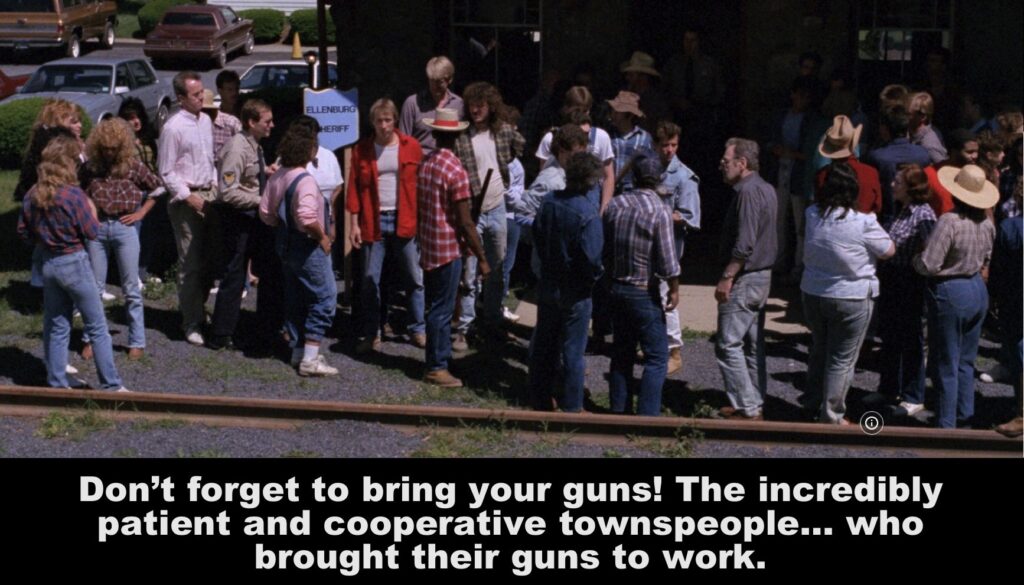
We ensured that none of the guns were loaded, and that any ammunition people brought was secured in their vehicles. I believe Mark Dolson purchased the appropriate blanks, and all shots of weapons firing were done without any children present. One gentleman who actually brought live rounds onto the set was immediately sent home.
Here’s a funny story about the mass murder of children… wow, that didn’t sound good! In addition to directing Mic Cribben also played farmer Braun, the religious zealot leading the townspeople. Mic and Ellen somehow convinced a local construction company to park a crane at the children’s camp, allowing for really high angle shots. Mic’s character was in those scenes, but he also had to be on top of the crane, operating the camera. We solved this conundrum by graying my luxuriously long hair with goop, sticking me in overalls and shooting me from behind. Mic shouted his dialogue from atop the crane, while I performed the kind of ridiculous silent movie hand gestures that I assumed real actors made. When it comes to acting even the back of my head is talentless.
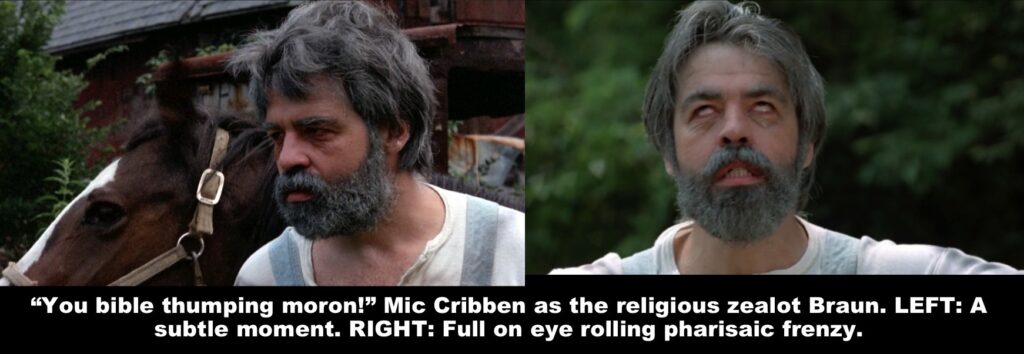
It was about ninety degrees that day, so the gunk in my hair hardened to spiky cement by noon. That really cramped my style as I’d planned on flirting with all the New Jersey single moms on set, because we’ve all heard stories about New Jersey single moms. Fortunately, the gray cement in my hair saved me from venturing down that chauvinistic path. And, just in case you were hoping for a little romance in this story I wound up living with one of the film’s leading ladies for about three years.
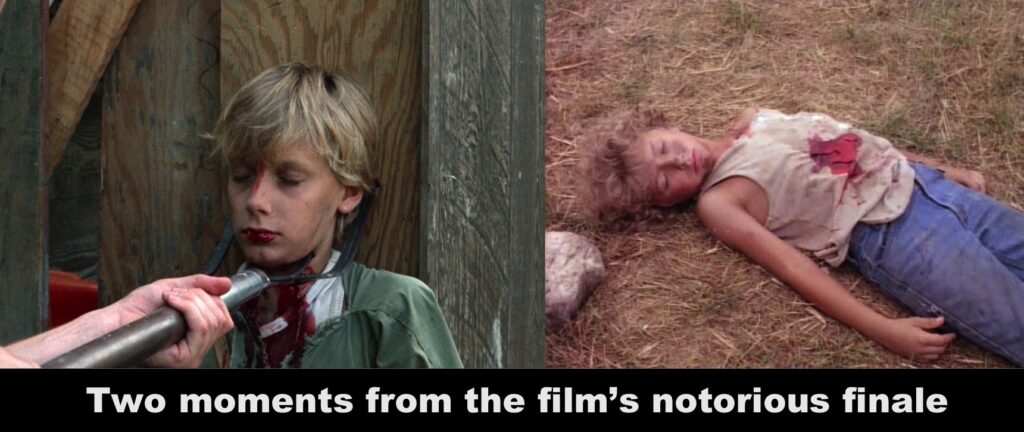
Despite all the gunfire, special effects and oppressive heat the shoot went off injury free, so you get a happy ending too boot.
After the production wrapped everyone sort of fell out of touch. Now, decades later, I’m delighted to discover that Mic and Ellen are still married, and living in Florida. I wish them all the best.
So, is Beware Children at Play a good movie? No, not in the traditional sense. But it’s a great example of just how outrageous indie films can be, and what can be accomplished when you ignore roadblocks like money and good taste, while throwing your heart and soul into something. Sure, the film’s production values are threadbare. Yes, the novice camera crew couldn’t measure focus properly. Undoubtedly some of the acting plays like a middle school production of Children of the Corn. But Mic and Ellen pulled it off together. It’s an entertaining film, and I doubt anyone out there could have done better with the scant resources at hand.
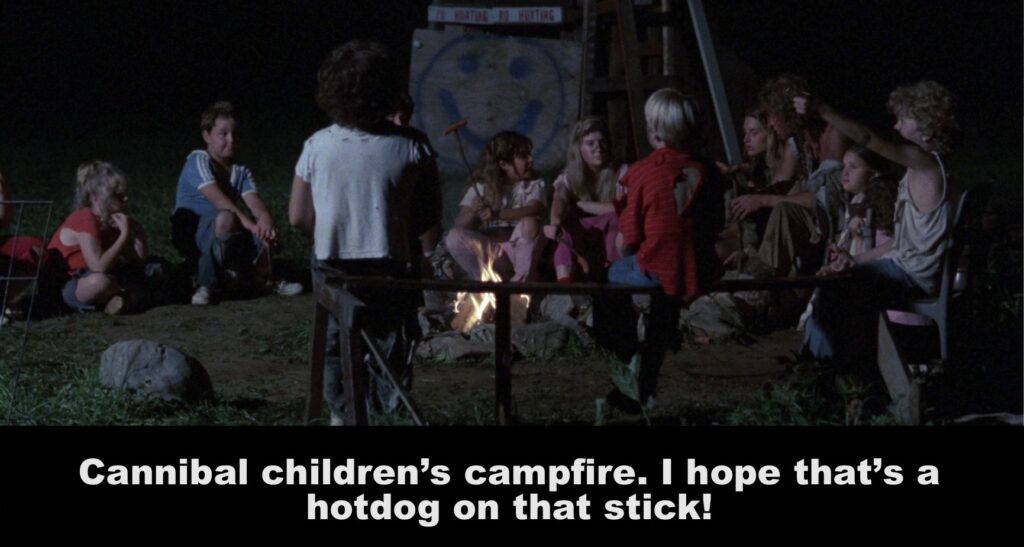
Working on Beware Children at Play led to paid gigs on New York indie films. I continued my career in Los Angeles and, later, Toronto. Looking back on my experiences with Mic and Ellen I’m reminded of the final episode of The Office, when Andy said, “I wish there was a way to know you’re in the good old days before you’ve actually left them.” With a few more hours of sleep, and a tiny bit of money, Beware could have been at the top of my good old days list. But, hey, you can’t have everything. Thinking back on it still makes me smile.
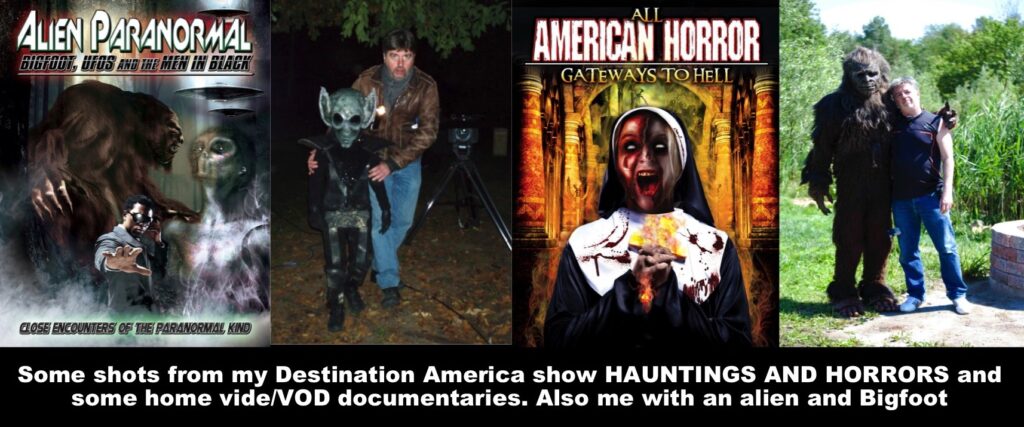
I’m also grateful for having spent my twenties in New York, back when it was vibrant, dangerous and still cheap enough for a knucklehead like me to afford rent. Sure, the subway smelled like a boiled diaper but that was part of the city’s charm.
I recently watched the Blu Ray of Beware with a friend who, after the finale, asked me, “Do you think you could make a movie like that today?” The answer is no, and even if you could, you really shouldn’t. I didn’t say making Beware was a responsible thing to do back in the day, but now it’s just too dangerous. Here’s my long winded, non-professional reasoning.
Back In the 20th century, even the most withdrawn person’s primary interaction was with co-workers, teachers or family. So, if they expressed some dark, violent fantasies there were flesh and blood people around them to say, “Buddy, you need help, and you need it bad.” They’d be hard pressed to find anyone who’d goad them into acting on their impulses.
Now, thanks to social media disturbed individuals can blow off reality, retreating into some dangerous online community, where a cavalcade of enablers will cheer on their dark thoughts about shooting children, non-Christians, or people of color. That online encouragement can become loud enough to drown out any rational voices around them. Then, they just wait till they turn eighteen, take grandma’s birthday check over to the gun store and go buck wild. Creating a volatile fantasy like Beware in the age of social media could add fuel to some disturbed, easily led person’s fire, with too many hateful online voices eager to mould that fantasy into a reality. Was that pretentious enough? Good.
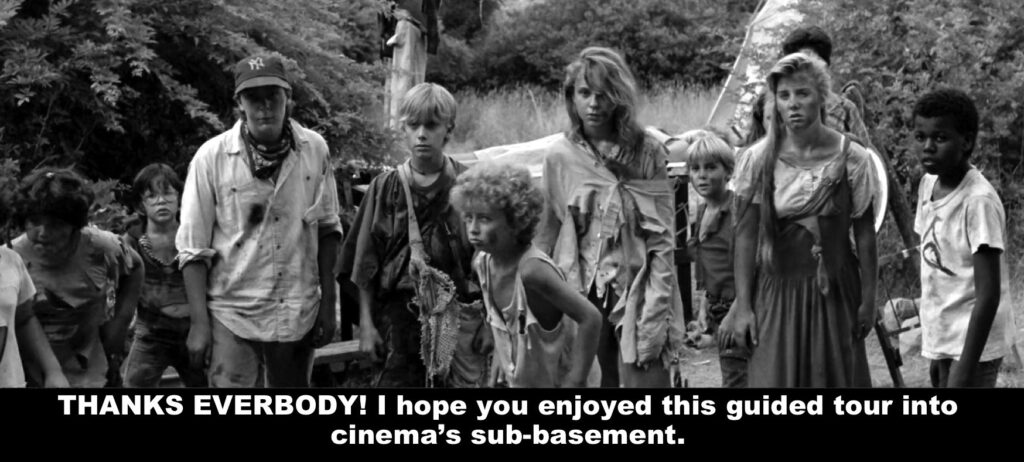
And if you need more horror and adventure in your life check out my latest novel, DOMINANT SPECIES, published by Severed Press.



